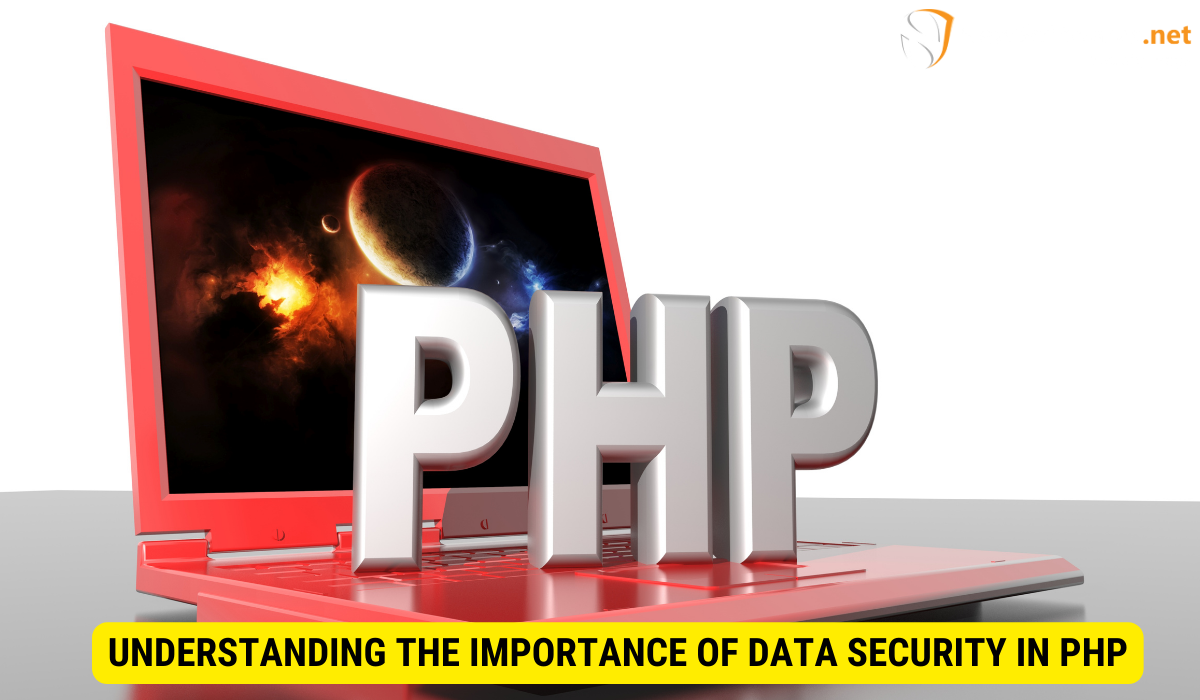Secure data insertion in PHP is essential to prevent risks like SQL injection and XSS attacks. It involves data validation, data sanitization, prepared statements, and parameterized queries. Advanced techniques include stored procedures and data escaping. Using trusted libraries and frameworks enhances security.
Data security is of utmost importance when it comes to web development, especially in PHP. As a widely used programming language for server-side web development, PHP plays a crucial role in handling data insertion and storage. However, without proper security measures, the process of inserting data into a database can become vulnerable to various risks and threats.
Understanding the Importance of Data Security in PHP

In order to comprehend the significance of secure data insertion techniques in PHP, it is essential to understand the role of PHP in web development. PHP is a server-side scripting language that is primarily used for creating dynamic web pages and managing the interaction between a website and its database. This means that PHP is responsible for handling data sent from users and ensuring its secure storage and retrieval.
When handling sensitive user data such as passwords, financial information, or personal details, it becomes crucial to implement robust security measures. Failure to do so can result in data breaches, compromised user privacy, financial losses, and damage to the reputation of an organization.
The Role of PHP in Web Development
PHP acts as the bridge between a web server and a database server, allowing web applications to dynamically process and store data. It enables the seamless integration of user inputs with databases, providing the necessary functionalities for data insertion and retrieval.
One of the key advantages of PHP is its versatility in handling various types of databases. Whether it’s MySQL, PostgreSQL, Oracle, or SQLite, PHP can interact with different database management systems, making it a popular choice among developers.
Furthermore, PHP offers a wide range of built-in functions and libraries specifically designed for data security. These functions allow developers to sanitize user inputs, validate data, and prevent common security vulnerabilities.
Risks of Insecure Data Insertion
Without proper security measures, the process of data insertion in PHP can expose vulnerabilities that can be exploited by attackers. Some of the risks associated with insecure data insertion include SQL injection, cross-site scripting (XSS), and cross-site request forgery (CSRF).
SQL injection occurs when an attacker manipulates user-provided data to inject malicious SQL statements into the application’s database queries. This can lead to unauthorized access, data modification, or even the complete compromise of the database.
To mitigate the risk of SQL injection, PHP provides prepared statements and parameterized queries. These techniques ensure that user inputs are properly escaped and treated as data rather than executable code, preventing malicious SQL injection attacks.
XSS involves injecting malicious scripts into web pages that are viewed by other users. This can result in the theft of sensitive data, such as session cookies or login credentials.
To prevent XSS attacks, PHP offers functions like htmlspecialchars() and htmlentities() that can be used to sanitize user inputs and encode special characters. By properly sanitizing user inputs, developers can prevent the execution of malicious scripts and protect users from XSS vulnerabilities.
CSRF attacks exploit the trust of a website’s users by tricking them into performing unintended actions without their consent. This can lead to unauthorized data manipulation or illicit transactions.
To defend against CSRF attacks, PHP provides mechanisms such as CSRF tokens and session management. By generating unique tokens for each user session and validating them with each request, developers can ensure that actions performed on a website are legitimate and authorized.
In conclusion, data security is of utmost importance in PHP web development. By understanding the role of PHP in web development and the risks associated with insecure data insertion, developers can implement robust security measures to protect sensitive user data and maintain the integrity of their applications.
Fundamentals of Secure Data Insertion
To ensure the security of data insertion in PHP, it is important to understand and implement the fundamentals of secure data handling.
When it comes to handling data securely in PHP, there are several key concepts that developers need to be aware of. These concepts include data validation and data sanitization, both of which play a crucial role in preventing security vulnerabilities such as SQL injection and XSS attacks.
Basics of Data Validation
Data validation is the process of verifying that user-provided data meets specific criteria or restrictions. By implementing proper data validation techniques, developers can ensure that only valid and expected data is inserted into the database. This helps to prevent issues such as SQL injection and XSS attacks.
One common method of data validation is input sanitization, which involves removing or encoding potentially malicious content from user input. This can be done by using functions like htmlspecialchars() or strip_tags() to remove HTML tags and special characters.
Another method of data validation is input filtering, which involves checking the format and structure of the data to ensure it meets the expected criteria. This can be done using regular expressions or built-in PHP functions like filter_var() to validate email addresses, URLs, or numeric values.
Regular expression matching is also a powerful tool for data validation. Regular expressions allow developers to define specific patterns that the input data must match. This can be useful for validating complex data formats such as phone numbers, postal codes, or credit card numbers.
Importance of Data Sanitization
Data sanitization involves the transformation of user-provided data to a safe and consistent format before insertion into the database. This ensures that any potentially harmful characters or scripts are neutralized. By sanitizing data, developers can prevent SQL injection attacks and protect the integrity of the database.
There are several techniques that can be used for data sanitization. One common technique is removing or encoding special characters that could be used to inject malicious SQL code. This can be done using functions like mysqli_real_escape_string() or prepared statements, which automatically handle the sanitization process.
Enforcing data type constraints is another important aspect of data sanitization. By ensuring that the data being inserted into the database matches the expected data type, developers can prevent unexpected behavior and potential security vulnerabilities. This can be achieved by using PHP’s built-in functions like intval() or floatval() to convert user input into the appropriate data type.
Using parameterized queries is also an effective technique for data sanitization. Parameterized queries separate the SQL code from the user input, preventing any possibility of SQL injection. This is done by using placeholders in the SQL statement and binding the user input to those placeholders using prepared statements.
In conclusion, understanding and implementing the fundamentals of secure data handling is crucial for ensuring the security of data insertion in PHP. By properly validating and sanitizing user input, developers can prevent security vulnerabilities and protect the integrity of the database.
Implementing Secure Data Insertion Techniques
To implement secure data insertion in PHP, developers must employ robust techniques and best practices to mitigate the risks associated with data vulnerabilities.
Utilizing Prepared Statements
Prepared statements are a powerful technique used to prevent SQL injection attacks. They involve the separation of SQL code from the user-provided data by using parameter markers. These parameter markers are then bound to the user-input values, ensuring that they are properly escaped and formatted.
By utilizing prepared statements, developers can significantly minimize the risk of SQL injection and improve the overall security of data insertion in PHP.
Employing Parameterized Queries
Parameterized queries are another effective method for secure data insertion. They involve the use of placeholders in SQL statements, which are then replaced with the actual user-provided values during execution. This ensures that the data is properly escaped and formatted, preventing any malicious SQL injection attempts.
Parameterized queries provide an additional layer of security by separating the SQL code from the user-provided data, making them an essential technique for secure data insertion in PHP.
Advanced Techniques for Secure Data Insertion
In addition to the fundamentals, there are advanced techniques that can further enhance the security of data insertion in PHP.
Understanding Stored Procedures
Stored procedures are precompiled database routines that are stored and executed on the database server. They help in encapsulating and securing complex SQL logic, ensuring that it is executed in a controlled environment.
By utilizing stored procedures, developers can minimize the risk of SQL injection and ensure the consistent and secure insertion of data into the database.
Exploring the Use of Escaping Data
Data escaping involves the modification of user-provided data to make it safe for insertion into a database. This technique involves the addition of escape characters or encoding the data in a specific format to neutralize any potential threats.
By applying proper data escaping techniques, developers can prevent the execution of malicious scripts, SQL injection attacks, and maintain the security of the overall application.
Best Practices for Secure Data Insertion in PHP

Implementing secure data insertion techniques in PHP requires adherence to best practices to ensure robust protection against data vulnerabilities.
Regular Updates and Patching
Keeping PHP and its associated libraries up to date is crucial for maintaining a secure environment. Regularly updating PHP versions and applying security patches is essential to address potential vulnerabilities and ensure the overall security of the application.
Using Trusted Libraries and Frameworks
Utilizing trusted and well-established PHP libraries and frameworks can greatly enhance the security of data insertion. These libraries often have well-tested and proven mechanisms for secure data handling, saving developers time and effort in implementing their own solutions.
Key Takeaways
- Data security in PHP is of vital importance to protect sensitive user information and prevent data breaches.
- Insecure data insertion can lead to risks such as SQL injection, XSS, and CSRF attacks.
- Fundamentals of secure data insertion include data validation and data sanitization.
- Implementing prepared statements and parameterized queries helps prevent SQL injection.
- Advanced techniques like stored procedures and data escaping provide further security.
FAQs
What is the role of PHP in web development?
Why is data security crucial in PHP?
Data security in PHP is crucial to protect sensitive user information and prevent data breaches.
What are the risks of insecure data insertion?
Risks include SQL injection, XSS, and CSRF attacks, which can compromise data integrity and user privacy.
How does data validation help in secure data insertion?
Data validation verifies user input, preventing invalid data from being inserted, thus reducing vulnerabilities.
Why should developers use trusted libraries and frameworks for secure data insertion?
Trusted libraries and frameworks have established security mechanisms, saving developers time and effort in implementing secure data handling.
Conclusion
Securing data insertion in PHP is essential for protecting user information, preventing data breaches, and maintaining the trust and credibility of an application. By understanding the risks associated with insecure data insertion and implementing robust techniques like data validation, data sanitization, prepared statements, and parameterized queries, developers can significantly enhance the security of data insertion in PHP. Additionally, advanced techniques such as stored procedures and data escaping provide further layers of security. By adopting best practices, including regular updates and patching, and utilizing trusted libraries and frameworks, developers can ensure the long-term security and integrity of their PHP applications.
